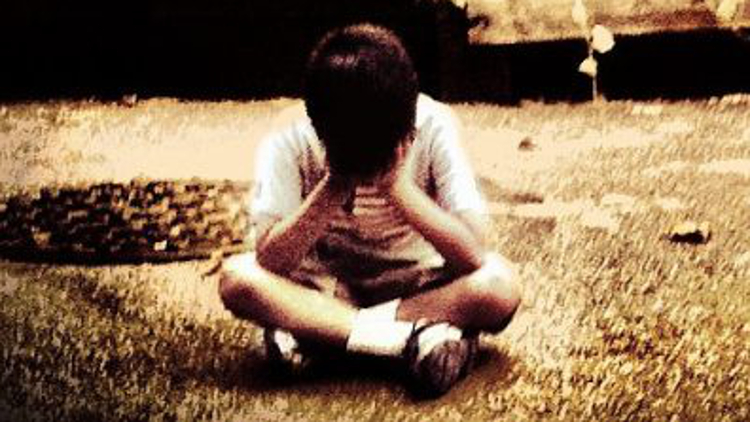
Child Poverty. Pic: Jack Mallon
A charity in Tower Hamlets have branded the level of child poverty in Tower Hamlets a disgrace after a study showed that more than half of children in the borough are suffering from poverty, the highest rate in the UK.
The study by End Child Poverty showed that childcare costs have pushed 130,000 children in the country into poverty as they take the biggest toll on families’ budget alongside housing.
Rebecca Clement-Nye from Step Forward, a charity supporting young people in the borough, told Eastlondonlines: “It is a disgrace that over half of the children in Tower Hamlets live in poverty.
“The causes of child poverty are multiple and complex so there is no single answer for reducing it. It is rooted in the structural inequality in our economy, high housing costs, changes in the labour market, benefit changes and a range of other factors.
“The demand for our services has only increased but our funding has been cut. We’ve been striving to help disadvantaged young people for over 30 years so they can reach their full potential in life.
“There has never been such a rise in child poverty in Tower Hamlets as there has been over the past few years. The government need to connect with young people as well as local groups and communities to ensure our borough doesn’t continue to suffer from child poverty on such a scale.”
Levels of child poverty in local areas were compiled by academics at the Centre for Research in Social Policy at Loughborough University using a new method for estimating child poverty using a range of indicators.
The latest figures relate to relative rather than absolute poverty. Relative poverty means living in a household where income is less than 60 per cent of the national average (median).
The poorest areas, notably in cities such as London, are seeing rates rise fastest.
Out of the four east and south London boroughs, Tower Hamlets has by far the highest percentage of child poverty in their community. They have almost double the percentage of Croydon and Lewisham.
Hackney has the third highest percentage of children living in poverty out of all London boroughs with 48 per cent and is only behind Newham and Tower Hamlets.
Croydon is ranked joint 25th for the highest percentage of children living in poverty alongside Hounslow with 30 per cent, making it the lowest ranked out of all Eastlondonlines boroughs.
Lewisham has the 16th joint highest percentage of child poverty with 37 per cent which is shared with Redbridge and Harrow.
The latest data also showed that Hackney and Newham also have among the highest levels of child poverty, with 48 and 52 per cent respectively.
Both boroughs are located right next to Tower Hamlets which has the highest proportion of child poverty with 57 per cent which shows that this is a major issue in these areas.
This is despite 1830 affordable homes being built in Tower Hamlets in the last three years. Twenty nine per cent of all new housing is affordable and the borough has the highest number of affordable homes built by a London council.
Croydon has a fairly low percentage with 30 per cent, whilst Lewisham sits in the middle with 37 per cent of children living in poverty. They share the same proportion as Harrow and Redbridge which are both on the outskirts of North London.
All of the boroughs with over 45 per cent living in child poverty can be found between Central and North London: Westminster with 46, Islington 47, Hackney 48, Newham 52 and Tower Hamlets 57.
Boroughs with the lowest proportion of child poverty can be found in South London. All boroughs within London that have 25 per cent of child poverty or less can be found in this area.
Richmond upon Thames and Sutton, both located in South West London, have the lowest percentage of child poverty with 21 and Bromley falls just behind with 24 per cent.
Campaigners of the End Child Poverty campaign have warned the situation is becoming commonplace in some parts of London such as Tower Hamlets.
Anna Feuchtwang of the End Child Poverty coalition, which published the report, told Eastlondonlines: “We know how child poverty starts and we know how to end it. The income of less well-off families has been hit by significant cuts in benefits and by higher housing costs.”
Child poverty reduced dramatically between 1998-2011 when 800,000 children were lifted out of poverty.
The number of children in absolute poverty has increased by half a million since then.
Around 5.1 million children will be living in poverty by 2022 as a result of cuts to benefits and in-work allowances, the Institute for Fiscal Studies has predicted.
She explained: “Having a job does not solve the problem. Two thirds of child poverty occur in working families.
“In areas like Tower Hamlets, more children are expected to get caught up in poverty in the coming years, with serious consequences for their life chances.
“Large families are prone to having children live in poverty. This isn’t their fault and the government need to set a course of action to help these families.”
End Child Poverty urged ministers to reverse cuts and invest in children’s services such as mental health, education, childcare and social care, as well as end the two-child limit on child allowances in tax credits and universal credit.
The coalition also revealed that 42 per cent of children in poverty live in families with three or more children.
Men in the most deprived areas of England have a life expectancy 9.2 years shorter than men in the least deprived areas. They also spend 14 per cent less of their life in good health.
Professor Russell Viner, president of the Royal College of Paediatrics and Child Health (RCPCH), said the figures showed the gap between rich and poor was widening, and that this was “extremely frightening” for the future.
He said: “Child poverty doesn’t just determine whether a child can attend a school trip or has a safe and warm place to sleep. There is so much more to it. If this isn’t addressed, poverty can change a child’s entire life.
“We know children living on or below the breadline are more likely to develop mental health issues, become overweight or obese, and die early. They are also more likely to misuse substances.
“The government must reverse the cuts to early years services urgently to ensure a healthy future for our children and future population.”




